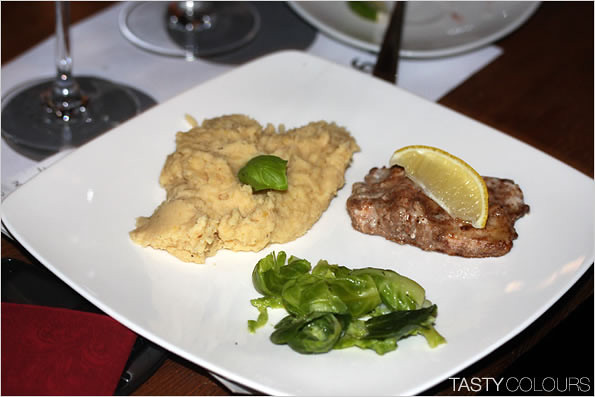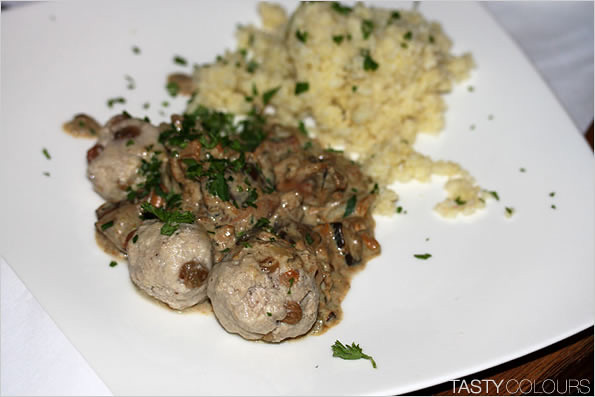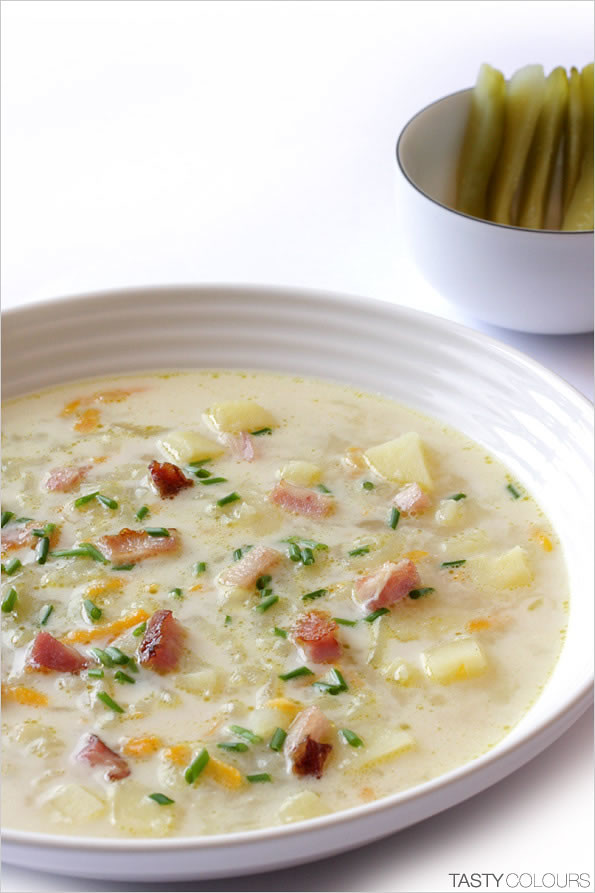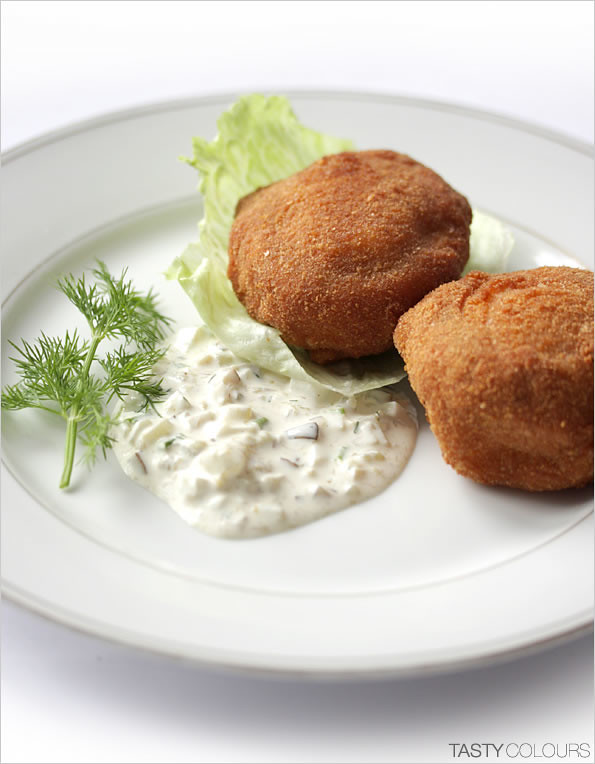Have you
ever eaten capon or topinambour? For some time, I have been reading a lot about Old Polish cuisine
and I am planning to start reviewing truly old Polish recipes, some of them having
origins as early as in the 17th century. I want to show you how
Polish cuisine was evolving and how multicultural it was. Such recipes, quite
often, are difficult to recreate because the products that were popular 200 or 300
years ago are hardly available nowadays, like capons or topinambour.
In September, I participated in an event designated to Old Polish 17th
century cuisine and Polish wines, titled “Capon and figatelle – the story about Old
Polish cuisine”. It took place in Winoman,
a wine bar and restaurant in Kraków. The lecture and the dinner were
moderated by professor Jarosław
Dumanowski, historian at the Nicolaus
Copernicus University in Toruń. He specializes in the history
and culture of nutrition. Do you know
anything about Old Polish cuisine and Polish wines? You think that maybe it
was “poulet et patates” or “pork and cabbage”? Not exactly. That food had
nothing to do with what Poles eat nowadays. In the old recipes, dated from the 17th and the 18th centuries,
one will rather not find any pork meat or any potatoes. The most popular
meat was capons – castrated cocks. Potatoes were popularized much later.
The cuisine of old Poland was multicultural and influenced by Ukrainians, Jews,
Lithuanians, Czechs, Prussians, Hungarians, Tatars etc. In their
authentic 17th century version, those dishes would be extremely
difficult to swallow (at least for us, Poles). Sensitivity of our taste buds changed
over hundreds of years… At Winoman,
dishes served to us were only inspired by those
authentic ones from the 17th century. Otherwise they would hardly be
edible.
The history of food and nutrition means, inter alia, extensive
research of historical sources and books. In Poland, we had just a few titles
that were discovered and reprinted recently. To say the truth, there is one and
only monumental Polish cookbook dating from the period before the partitions of
Poland, titled Compendium Ferculorum. The book had been printed out in Kraków,
and its author, Stanisław Czerniecki, was a cook of the aristocratic Lubomirscy
clan at their castle in Nowy Wiśnicz in southern Poland – I ordered it via internet and once it arrives I
will write more about it.
In the baroque era, Old Polish cuisine was
based on strong, explicit tastes, like, for example, pepper, saffron, sour and
sweet. The flavors should had been mixed and changed – most notably, in such a
way that it was hard to recognize what was served at the table (this reminds me
times of communism when poor quality of food served in some restaurants made their
patrons unable to recognize what was served
to them.
During September dinner we had a chance to taste four dishes
inspired by baroque cuisine as well as eight different Polish wines. Forgive me
moderate quality of the pictures.
Boneless carp
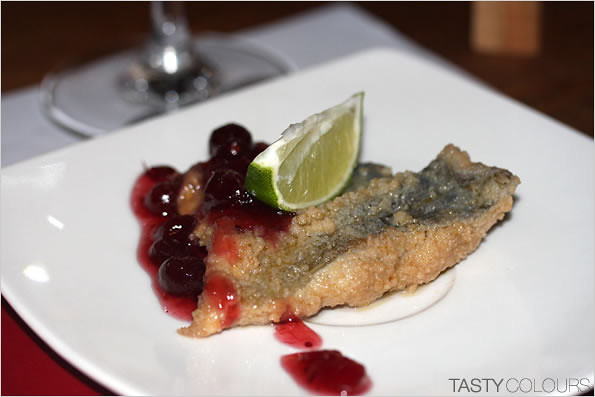
Carp is probably most popular fish in Poland, especially during
Christmas Season and the tradition of its culture on the territories of Poland is centuries
long. Some of the species, like “carp zatorski” have been registered
in the European Union as regional products. However, despite the fact that the
fish is commonly cultured in Poland, my impression is that the mediocrity of communism
killed the variety of carp recipes. Carp
served to us at Winoman was boneless, previously macerated, then fried
in butter with the addition of some grated bread. The flesh of the fish was
sour, thanks to the addition of vinegar. The acidity of the flesh
was broken by cranberry preserves, sweet onion, raisins and sugar. I
could also sense quite strong taste of pepper and cinnamon. The
fish was decorated with a wedge of lime (which I squeezed on my fish fillet to
make it more sour). The mixture of flavors and aromas was more similar to some of
the Asian food than to contemporary Polish cuisine.
Aromatic sturgeon in butter
Sturgeon – one of the most popular fresh water fish – was
served with sweet onion, parsley, wine, raisins, cinnamon and muscatel. The taste of “4 spices” dominated, but
despite the fact that I am not an afficionado of cinnamon, the flavors of the
fish flex were well balanced. The fish was served with a pea purée and blanched
leaves of Brussels sprouts. In the old times Poland potatoes were non-edible.
Instead, old fashioned vegetables like topinambour or peas were widespread.
Półgęsek
Besides capons, goose meat was quite popular hence the population of
those birds was huge. After the WWII, geese practically disappeared from the stores.
(You can find out more about young oat Polish goose - “gęś owsiana” here). Półgęsek – cold-smoked goose breasts has become more and
more popular again, but it is still not easy to buy in retail grocery stores; I
believe that the majority of its production goes to food festivals and
restaurants. We were served thin slices of “półgęsek” with cherry preserves.
It was a simple and tasty starter, however the amount of slices was minuscule
so I could not delight myself enough with the taste of this excellent regional Polish
specialty.
Figatelle
The The
Figatelle dish had nothing
to do with Italian cooking. In Old Polish cuisine, pork meat was very rare, and
meat balls made from the mixture of veal and capon meat with the addition
of buffalo grease, pepper, nutmeg, raisins and eggs were common.
In the old times they were served as a side dish to the main courses.
At the end, Professor Dumanowski told us a few lines about the most
popular meat in Old (three hundred years ago) Poland which was capon. Today,
you will not find this meat neither in the restaurant nor in the stores. I had
capon meat a few times in my life, but that was in France as my mother-in-law used to bake
it. More about capons in the future posts.
Bigos (contemporary hunters stew)
Bigos
is a traditional stew typical
for Polish and Lithuanian cuisines. Many consider it
to be the Poland's national dish No.1.
Indeed, bigos has an extremely long tradition in Poland. Some say that
bigos can be traced back to the middle ages. It is said that bigos was
introduced in Poland by Jagiełło,
a Lithuanian prince who
became the king of Poland in the 14th century and established long lasting
union between two states. To make a long
story short, nowadays bigos consists of a long-braised mixture of various types
of meats and sauerkraut. However two or three hundred years ago cabbage was even
not added to it ! Instead, a lot of lime juice, wine and vinegar were
put into the dish. When Poland gradually became more and more
impoverished in the 18th Century, lime and expensive spices usage
was greatly reduced and, to keep sour taste of bigos, people started to add
cheap pickled (fermented with salt) cabbage, today internationally known as
sauerkraut. I will cook cabbage-free bigos in a future recipe (when I
receive my old Poland cookbook). Today, I propose my mum's version (my
dad’s version is slightly different), which is very tasty. I love to eat it in
the winter time.
In
the old times, bigos was stored in every household’s pantries in big stone or
clay pots, ready to be served to unexpected guests or as a provision for long
trips. If anyone asks me about the most traditional and yet most pauperized
Polish dish during the communism – the answer is instant: bigos. As almost
everything in the Polish cooking after the war, this old and rich dish was
brutally simplified due to, among others, food shortcomings caused by
inefficient economy which instead of free market – was politically driven. I
remember it from my school years as a few shredded leaves of poor quality
cabbage swimming in an awful dirty sour sauce-like liquid. This had nothing to
do with real bigos, which needs many ingredients and the art of patient long and
repeatable cooking. Even today, in many
cheap eateries or “milk bars” you can order an ersatz of bigos, meaning cooked
cabbage with a bit of sausage added.
There
exist many variations of this flagship of the Polish cuisine and the one that I
present in my book is what I was taught by my mom. Remember: there is no
standard recipe for bigos. It’s just like with paella in Spain or with
bouillabaisse in southern France. Recipes
vary from region to region and from family to family being the very nucleus of people’s
culinary pride and honor. There are, however, certain rules and
the set of basic ingredients: hours long, slow cooking, different types of
meat and cold cuts, an addition of dried smoked plums (prunes), dried forest mushrooms
and spices. The base is always sauerkraut, sometimes some sweet cabbage added is
added, various cuts of meats, hams and sausages,
tomato paste, honey, sour apples, bay leaves, allspice, cloves, mustard and red
wine. In my family bigos is cooked traditionally between Christmas and New
Year's when various meats leftovers are available, so it is ready for Sylwester
– the New Year’s Eve party and it often crowns it when served at early morning
hours to refresh exhausted party guests. And last but not least, Polish style: it
tastes great with frozen vodka.
Few
tips: bigos must have a dense solid consistence. It should be rich with meat.
It is said that the best proportions are: half meat and half cabbage, although
this depends on your own preferred taste. It is important that almost all
juices slowly evaporate while cooking. When served, you should not have any liquid
left on the plate. My father cooks bigos for a few days. Several hours of
braising on a very low burner (frequently stirring so the mixture would not
stick to the bottom of the pot) and then onto the balcony where it freezes
overnight. The following day this procedure repeats. And then again, for a day
or two until bigos is fully macerated and all flavors combine into one unique
blend. And half a bottle of red wine goes into the pot for the final twenty
minutes of warming the dish up before serving.
I
do not add tomato concentrate. Some recipes advise to do so, which, in my
opinion, is incorrect. You can add types of meat other than those indicated in
the recipe like greasy duck, goose, venison, ham and sausages. The wider
variety of meats - the better. Bigos should be quite spicy in taste, a bit
sour, with an explicit wine aftertaste. The meat should be completely soft,
nearly melted like in French rilettes. You can replace prunes with a couple of spoons
of plums preserves (powidła). You can make it fifty-fifty of sauerkraut
and white cabbage. In such a case, white cabbage should be finely chopped and separately
precooked until half-soft.
And
bigos is one of those dishes that taste better with the flow of time. It tastes
best after 3 days of cooking and refrigerating. Considering
long cooking time and plethora of ingredients, it is not worth preparing for 4
people only. Cook the big quantity. Bigos freezes easily and when thawed - – it
will still be delicious or even better !
My Mum's Polish
Hunter's Stew (Bigos)
Cooking time – 3 days
(3 x 1-1,5 hour)
Serves 10
Ingredients:
1.5 kg sour cabbage (you may use 50/50 sour and
regular white cabbage, however I prefer bigos made only with sour cabbage)
400 g raw, smoked bacon cut in strips 3 cm long
650 g pork shoulder, cut in cubes of 1.5 cm
650 g beef, for example shank (prega wolowa – do gotowania),
cut in cubes 1.5 cm
2 onions, peeled and washed, finely chopped
120 g dried, smoked plums, without seeds and cut
into halves
50 g dried ceps
30 g sultan raisins
3 bay leaves
8 grains allspice
8 grains juniper berries
10 grains black pepper
3-4 cloves
500 ml meat stock
500 ml dry red wine
4 tablespoons goose grease
2 tablespoons flour
salt
pepper
Prepare the cabbage: Chop it
finely. Squeeze it in hands and remove any excess of sour juice saving it for
later adding it to the dish if necessary. Place the cabbage in a large
saucepan, add onions and spices: bay leaves, cloves, juniper, allspice and
pepper. Pour half of bullion into the cabbage and onions and mix everything.
Cook for
hour and a half, until cabbage and onions are soft, on a small flame and stir
often, so the cabbage does not stick to the bottom. Put aside.
Prepare
the meat: In
the meantime, prepare the meat. Put the pork and veal in two separate bowls.
Sprinkle them with a bit of flour and mix. Heat two saucepans or frying pans
and melt 2 tablespoons of goose grease in each pan. When the grease is hot, put
pork and beef into the pans, sauteé them and cook under the cover over a medium
flame until soft for around one hour. If necessary, add some beef or veal stock.
Stir frequently. In a hot frying pan, cook the bacon until the grease is fully
released. When the bacon and meats are done, place them in the saucepan with
cabbage and mix well. Simmer for another hour, stirring often. Remove from the
heat, let it cool down completely and put overnight into the fridge or outdoor.
Finish
your bigos: On the next day, put mushrooms into 500 ml of water and
let them soak overnight. Soak raisins in
100 ml of water. On the next day, cook mushrooms for 10 minutes. Remove bigos
from the cold place. Strain the mushrooms and raisins, reserve the bullion. Cut
mushrooms into strips (0.5 cm wide) and add them to bigos. Add raisins and
plums, mushroom stock, mix well and cook over a small flame for another hour
and a half. Mix often.
When all
juices evaporate, add wine and let it cook until wine evaporates completely.
Mix often, do not let bigos burn ! Salt and pepper to taste, if too sour add
some honey. You can serve it immediately, however it tastes best after at least
one more night in the cold place and one more hour of cooking. Serve with good
organic bread. Don’t forget about a shot of vodka !
Bon appétit !
And yet something for those who know all
meanders of our beautiful Polish language. My father has been cooking for
decades but from time to time he also writes funny culinary poems and plans to
publish them soon. The hero of one of his pieces is bigos, this icon of our
national cuisine. It comes in a form of a classic sonnet:
Sonet bigośny
Stanąłem dziś
przy beczce kiszonej kapusty
Świątecznej kaczuszki resztek mam ci
w domu fest
Do tego szyneczka, boczuś, co tam
jeszcze jest
Grzybki, śliwki, jałowiec i reszta
rozpusty
Bigos warzę raz w roku, on wszak
mrozu łaknie
Na ogień, na balkon, na ogień, na
balkon - tak !
Gdy zaniedbasz tę rutynę, wyjdzie
byle jak
Niby będzie miał wszystko – lecz mu
duszy zbraknie
Maceruj go, maceruj, aż sczeźnie do
imentu
Przegryzaj go, przegryzaj, kapusty
zakłóć woń
Wszystko to zapisuj, aż braknie
atramentu
A gdy dojdzie już on, winem podchmiel
go wreszcie
Winem się uszlachetni i będzie mógł
pójść w świat
Bigosować ! Naród niech sławi się !
Nareszcie !
Copyright by
Krzysztof W. Kasprzyk, 2011






